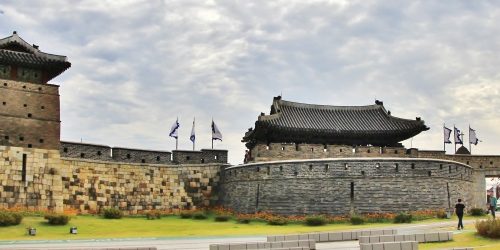More than just a historical landmark, this UNESCO world Heritage site, Hwaseong Fortress (which means Brilliant Castle/Fortress), is considered a national treasure for its wonderful origin, and is also the epitome of the rich Joseon Dynasty. The establishing of the fortress marks the development of Korean architecture, urban planning, landscaping and related arts. The majestic wall was built in the heart of Suwon, by a king in honor of his late father. The fortress is famous for its impressive, scientifically and innovatively built architecture, which resembles that of the European, and is made of high-end bricks, and wood. But the purpose of this massive wall does not just end there, it also serves as a defense system, and marks the building of a new political basis. The fortress houses a wide array of military facilities. The four main gates each face a specific direction at the cardinal points, Janganmun (north), Paldalmun (south), Changnyongmun (east), and Hwaseomun (west).Numerous defense features are as follows: observation towers,secret gates, beacon towers, bastions, floodgates, multiple arrow launcher towers, firearm bastions, command posts, angle towers, and bunkers. Suwon’s main stream, Suwoncheon is flowing right through the core of the fortress. A pavilion called Hwahongmun, sits above the seven-arch style Sumun gates. Various performances and events can be witnessed, and the much awaited Suwon Hwaseong Cultural Festival during Fall.
*photo source: https://blog.naver.com/kcis_/220507432965







